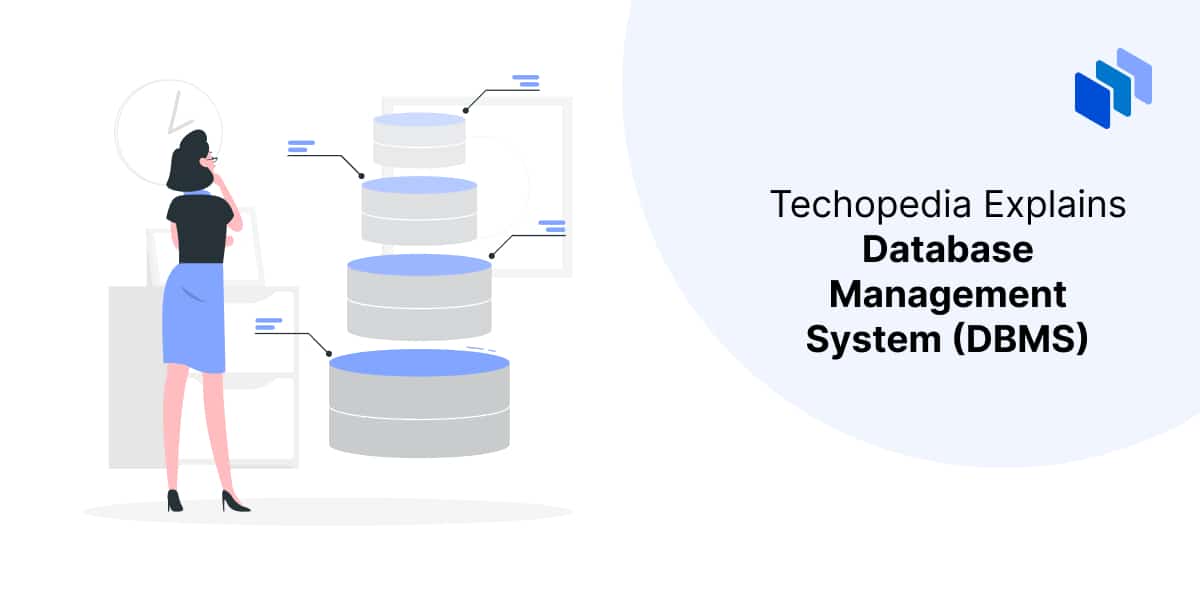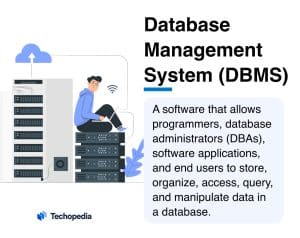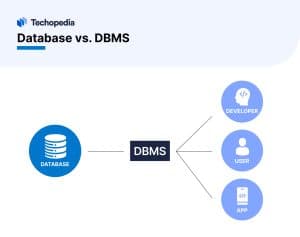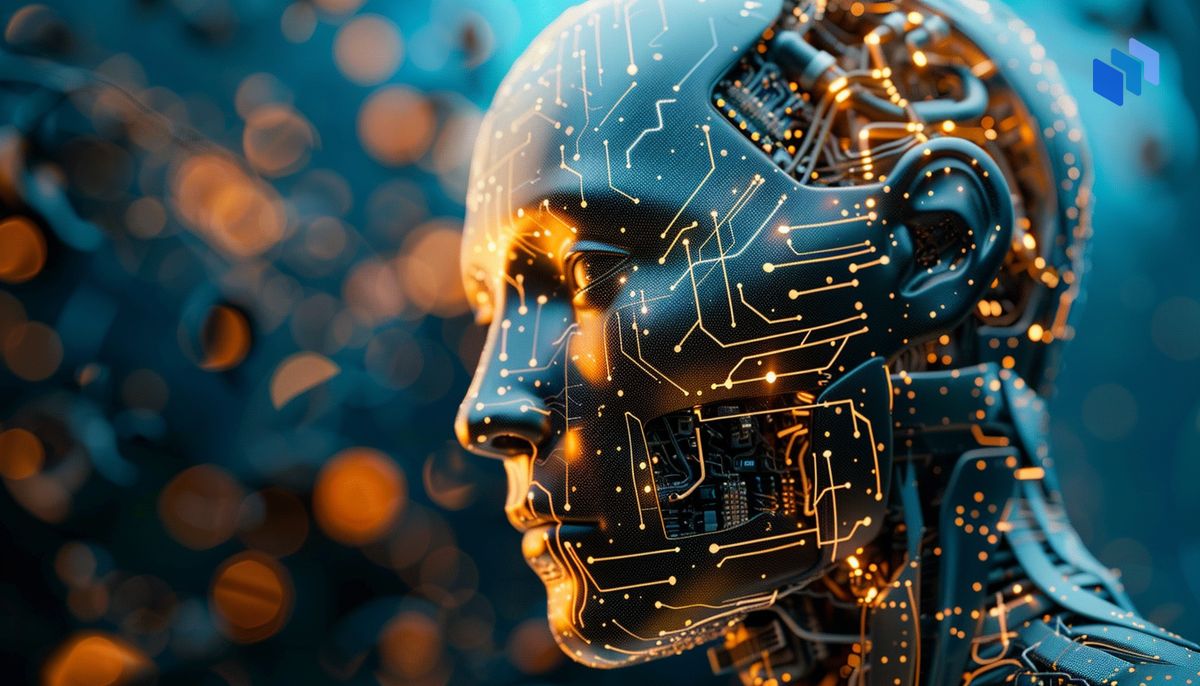What is a Database Management System (DBMS)?
A simple database management system (DBMS) definition is middleware that allows programmers, database administrators (DBAs), software application, and end users to store, organize, access, query, and manipulate data in a database.
DBMSs are important because they provide efficient and reliable mechanisms for organizing, managing, and using vast amounts of data while also ensuring data integrity and providing other data management benefits.
Techopedia Explains the DBMS Meaning
In the enterprise, database management systems provide database administrators (DBAs) with a structured framework that facilitates data sharing among different departments, teams, and applications. The DBMS provides employees with controlled and organized access to data that they can use to drive innovation and help their company maintain a competitive edge.
History of Database Management Systems
The history of database management systems dates back to the early 1960s when computers began to be used for data processing. At that time, the concept was usually referred to as an information management system.
The first commercially available database management system was the Integrated Data Store (IDS). It was developed by Charles W. Bachman and his team at General Electric (GE) in the late 1960s.
IDS was a hierarchical DBMS that organized data in a tree-like structure, with parent-child relationships between records. It allowed users to store, retrieve, and manage data in a structured manner. IDS also introduced the concept of the data dictionary, which defined the structure and relationships of the data within the database. Prior to IDS, data was usually stored in flat files, and there was no standard for how the files should be stored, accessed, or manipulated.
Bachman’s IDS was eventually overshadowed by the emergence of relational databases and the Structured Query Language (SQL) in the 1970s. Since that time, DBMS products and services have undergone continuous advancements that have improved data storage, retrieva, and management.
Evolution of Database Management Systems
| Year | Event |
| 1964 | Development of the first database, an Integrated Data Store (IDS), by Charles Bachman at General Electric. |
| 1966 | IBM introduces the Information Management System (IMS), a joint development with Rockwell and Caterpillar. |
| 1970 | Edgar F. Codd introduces the relational model in a paper titled “A Relational Model of Data for Large Shared Data Banks“. |
| 1974 | The Structured Query Language (SQL) is created. |
| 1976 | Peter Chen introduces the Entity-Relationship Model in his paper “The Entity-Relationship Model – Toward a Unified View of Data“. |
| 1979 | Oracle releases the first commercial relational database that uses SQL. |
| 1980 | IBM introduces System R, the SQL-based relational database management system. |
| 1981 | SQL/DS, the first full-function DBMS to run on personal computers, is released by IBM. |
| 1983 | The first version of DB2 by IBM is released for mainframes. |
| 1986 | The Object-Oriented Database System Manifesto is published, giving a significant push to the development of object-oriented databases. |
| 1996 | PostgreSQL, one of the first open-source relational database management systems is launched. |
| 1998 | MySQL, another significant open-source RDMS, is released for Windows 95 and NT. |
| 1998 | Microsoft launches SQL Server 7.0, a complete rewrite of their DBMS. |
| 2000 | Internet startups embrace XML databases. |
| 2004 | The term “NoSQL” gains popularity, leading to a new generation of non-relational, distributed databases. |
| 2006 | Google publishes a paper on BigTable, its internal NoSQL database, influencing a new wave of open source NoSQL databases |
| 2012 | Amazon introduces DynamoDB, a proprietary NoSQL database. |
| 2013 | FoundationDB, a distributed database designed to handle large volumes of structured data, is released. |
| 2017 | Google announces Spanner, a globally distributed database. |
| 2020s | Continued development and innovation in DBMS technology, with a focus on cloud-native databases, edge databases and improvements in artificial intelligence (AI) integration for database management. Blockchain databases also become a significant topic of interest. |
DBMS Components
The core component of every DBMS is called the database engine. It is the software that interacts directly with the underlying storage system or file system and orchestrates the interactions between modular sub-components that enable the engine to manage and manipulate data in the database system. This includes modules for:
Database vs. DBMS
The terms “database” and “database management system” are often used interchangeably in casual conversations. That’s probably because when end users interact with a database, they are not aware of the underlying DBMS and its distinct role in managing data. To add to the confusion, in some cases, the DBMS is embedded directly into the application code, making it even less apparent that a separate system is involved.
To differentiate between the two terms and use them correctly, it’s helpful to understand their respective roles and functionalities:
- A database is a structured collection of data.
- The database management system is the software that developers, end users, and applications use to interact with a database.
RDBMS vs. DBMS
A relational database management system (RDBMS) is a type of database management system. All RDBMSs are DBMSs, but not all database management systems are relational database management systems.
| DBMS | RDBMS |
| Different types can be used to manage various types of database models | Can only manage the relational database model |
| Data can be stored in diverse structures depending on the type of DBMS used | Always stores data in tables with rows and columns |
| The automatic enforcement of data integrity may vary across different types of DBMS | Automatically enforces data integrity through constraints such as primary key, unique key, and foreign key |
| Different DBMS types can use different languages or techniques for manipulating data | Always uses SQL |
Types of Database Management Systems
Until the turn of the century, database management systems were classified as either relational or non-relational, depending on their structure and uses. If the DBMS stored data in tables, it was referred to as a relational DBMS (RDBMS). If it did not store data in tables, it was referred to as a NoSQL or non-relational DBMS.
Today, database management systems are still categorized as being either RDBMS or non-RDBMS, but they are also classified by the unique advantages they provide. Types of DBMSs include:
Database Management Systems Example
Examples of well-known DBMSes include:
| Access – a lightweight RDMS included in Microsoft Office and Office 365. | |
 |
Amazon RDS – a native cloud DBMS that offers engines for managing MySQL, Oracle, SQL Server, PostgreSQL and Amazon Aurora databases. |
| Apache Cassandra – an open source distributed database management system known for being able to handle massive amounts of data. | |
| Filemaker – a low-code/no-code (LCNC) relational DBMS. | |
| Google Cloud Spanner – a globally distributed, horizontally scalable, and strongly consistent relational database service offered by Google Cloud. | |
| IBM Db2 – a family of relational database management systems developed by IBM that offers various editions for different environments and workloads. | |
| MariaDB – an open source relational database fork of MySQL. | |
| Microsoft Azure SQL Database – a cloud-based relational database service provided by Microsoft Azure that offers fully managed SQL databases. | |
| MongoDB – A popular NoSQL database management system that uses a document-oriented schema to provide high scalability and flexibility. | |
| MySQL – an open source RDBMS owned by Oracle. | |
| Oracle – a proprietary RDMS optimized for hybrid cloud architectures. | |
| PostgreSQL – an open source relational database management system known for its robustness, scalability, and extensive feature sets. | |
| SAP HANA – an in-memory, column-oriented RDBMS optimized for real time data ingestion and high-performance analytics. | |
| SQL Server – an enterprise-level relational database management system from Microsoft that is capable of handling extremely large volumes of data and database queries. | |
| SQLite – a lightweight, file-based relational database engine that is widely used in embedded systems and mobile applications. | |
| Teradata – a powerful SQL engine that provides scalable solutions for managing and analyzing large volumes of data. |
Benefits of Using a DBMS
Manages interactions between multiple users or applications accessing the same database simultaneously, ensuring data integrity in high-traffic scenarios.
Offers a variety of security features such as access control rules, user role assignments, and permission settings to safeguard data from unauthorized access or manipulation.
DBMSs are useful compliance tools because they provide audit trails and logging capabilities to track and monitor data access use and modifications.
A DBMS can help admins manage data lifecycle management by implementing policies for data retention, archival, and eventual disposal. A DBMS can also help enforce privacy controls by providing mechanisms that anonymize or encrypt sensitive data.
Enforces privacy measures through mechanisms like data anonymization or encryption to protect sensitive information from unauthorized disclosure.
Challenges of Database Management Systems
Although database management systems have revolutionized the way small and large businesses handle and manage data, the learning curve for enterprise DBMS implementation and management can be challenging. This is especially true if the DBMS needs to be integrated with enterprise resource planning (ERP) systems or customer relationship management (CRM) platforms.
Rolling out a new DBMS can also be expensive. Even mid-size businesses will most likely need to hire or contract with a skilled database administrator to ensure their DBMS is properly configured, maintained, and optimized. Licensing fees, hardware infrastructure, software upgrades, and ongoing maintenance expenses can also strain budgets, especially for smaller organizations.
Future of the DBMS
Today’s DBMSs incorporate cutting-edge technologies such as AI, machine learning (ML), and blockchain to tackle the challenges of big data and help organizations stay compliant with relevant regulations and standards for data management.
- DBMSs equipped with AI and ML capabilities can automate tasks such as query optimization, data indexing, and anomaly detection. Intelligent database management systems can learn from data patterns, adapt to changing workloads, and optimize performance autonomously.
- Blockchain-enabled databases can provide immutable, transparent data storage and enable secure, auditable transactions. This type of database management system eliminates the need for central authorities while still enhancing data integrity. It makes them ideal for industries like finance, supply chain, and healthcare, where the risks and impacts of data tampering are significant.
- DBMSs with built-in stream processing capabilities are becoming vital for use cases like real-time analytics, fraud detection, and personalized customer experiences. With the rise of the IoT and streaming data sources, DBMSs will need to handle real time data processing even more efficiently.
FAQs
What is a DBMS in simple terms?
Is SQL a DBMS?
What is an example of a DBMS?
Is Excel a DBMS?
References
- Charles W. Bachman – A.M. Turing Award Winner (Amturing.acm)
- A Relational Model of Data for Large Shared Data Banks (Seas.upenn)
- The Entity-Relationship Model-Toward a Unified View of Data (Csc.lsu)
- Charles W. Bachman – A.M. Turing Award Winner (Cl.cam.ac)
- Bigtable: A Distributed Storage System for Structured Data (Static.googleusercontent)
- Database logging – IBM Documentation (Ibm)
- Introduction to Database Auditing (Docs.oracle)
- What are the steps of SQL Query processing in DBMS? (Tutorialspoint)
- SQLite Home Page (Sqlite)
- Neo4j Graph Database & Analytics | Graph Database Management System (Neo4j)
- Databases Page (Cockroachlabs)
- Volt Active Data | Data Platform for Mission-Critical Applications (Voltactivedata)
- db4o (database for objects) download | SourceForge.net (Sourceforge)
- PostgreSQL: The world’s most advanced open source database (Postgresql)
- InfluxDB Time Series Data Platform | InfluxData (Influxdata)
- Managed SQL Database – Amazon Relational Database Service (RDS) – AWS (Aws.amazon)
- Spanner | Google Cloud (Cloud.google)
- IBM Db2 (Ibm)
- Azure (Azure.microsoft)
- Document Database – NoSQL | MongoDB (Mongodb)
- PostgreSQL: Feature Matrix (Postgresql)
- HANA Data Strategy: Data Ingestion including Real-… – SAP Community (Blogs.sap)
- One platform.Unlimited possibilities. (Teradata)








